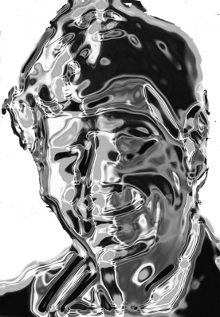A magazine where the digital world meets the real world.
On the web
- Home
- Browse by date
- Browse by topic
- Enter the maze
- Follow our blog
- Follow us on Twitter
- Resources for teachers
- Subscribe
In print
What is cs4fn?
- About us
- Contact us
- Partners
- Privacy and cookies
- Copyright and contributions
- Links to other fun sites
- Complete our questionnaire, give us feedback
Search:
Claytronics - from goo to you?
Star Trek's transporter was a clever device that allowed the characters to teleport from their spaceship to the planet. Devised by Gene Rodenberry, Star Trek's creator as a way to avoid the costly special effects of landing spaceships in the TV series, the transporter became the key to many an episode.
In effect, the transporter scans the passenger's atoms, disintegrating them into energy, then transmitting the energy to recreate a copy of that "pattern of atoms" on the planet below. It's a nice idea but the physics is frightening, disintegrating atoms and turning them into energy is exactly what a nuclear bomb does, and a nuclear bomb only converts a tiny fraction of matter to energy. If we really want to be able to create copies of ourselves at a distance we need to think of less explosive methods.

And it is just this problem that Computer scientists in the USA at the Carnegie-Mellon University Synthetic Reality Project are looking at. Their solution, a new science called Claytronics. By using tiny programmable machines they hope to develop 'programmable matter', where millions of tiny devices called "claytronic atoms" or "catoms" would assemble into the shape of any object you want, connecting and disconnecting as they move. Currently they have developed experimental catoms that connect and move via magnets. These early devices are around 4 centimetres in size, much larger that the size the team want to develop, but you have to start somewhere.
The challenges are both in the technology, how do you build these tiny sized catoms, but also in the programming, how do you instruct billions of little machines to build a moving copy of yourself from the goo? In the future if these problems are solved we can imagine a world where you can transmit yourself to a meeting, where the claytronics will build a copy of you, much like the smart liquid metal of the T-1000 Terminator android in the film Terminator 2 Judgement Day. Once your meeting is over, your duplicate will melt away and the claytronic programmable matter will reassemble into whatever it's next instructed to become.



